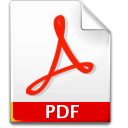
The American Journal of Managed Care
- December 2016
- Volume 22
- Issue 12
The Health Information Technology Special Issue: Current Trends and Future Directions
The 6th annual Health Information Technology (IT) issue occurs at a time of significant change in US health IT—related policies. These articles will offer guidance to those working to overcome their own health IT challenges and support practitioners’, policy makers’ and researchers’ efforts to leverage health IT in support of a better health system.
Am J Manag Care. 2016;22(12):800
The 6th annual Health Information Technology (IT) issue occurs at a time of significant change in US health IT—related policies. The century’s first decade witnessed significant federal and state actions to improve our health system. However, we are at a point of transition, as the overt products of those policy initiatives begin to wane: the State Health Information Exchange Co-operative Research Grant Program is over, and the 4-year Regional Extension Center Co-operative Agreement Program to support electronic health record (EHR) adoption has largely ended. Even Meaningful Use, a dominant force in tens of thousands of organizations’ health IT planning, purchasing, and daily activities, is now incorporated into larger health and payment policies. These 10 articles reflect this period of transition by assessing the progress and challenges in our current state of health IT usage and by considering its role in this age of increasing provider accountability.
Hospitals remain an important source of information about the current state of health IT given their history of early EHR adoption and the complexity of their operations and environments. Moreover, unlike many other organizations, researchers have access to comprehensive and longitudinal data on hospitals. In this issue, 3 articles use hospitals as the unit of analysis, but each has a different and highly relevant focus area. Chan et al remind us that even in 2016, we have not yet solved the implementation problem, and their approach of applying item response theory challenges some of our commonly held assumptions on the barriers to using health IT. Looking further down the adoption-implementation-usage progression, Holmgren et al examine hospitals’ reported usage for finding, sending, receiving, and integrating health information, and conclude that the use of interoperable health IT still has room to grow. The article by Walker et al is at the intersection of health IT and organizational strategy, focusing on specific health IT capabilities of hospitals engaged in accountable care organizations.
Importantly, 3 articles are included from organizations undergoing significant periods of transformation, but without the influence and funding of Meaningful Use. Rettler et al describe the information system and data challenges facing public health departments in a case study of Massachusetts’ efforts to improve care coordination for individuals living with HIV. A case study by Mesiano et al provides insights about populating a behavioral health home patient registry. Quinn et al also focus on behavioral health care and the role of payers by using survey data to describe health plans' use of technology.
Organization adoption and use are important indicators of our progress and challenges. However, as my dissertation advisor was fond of saying, technology is not simply “electrifying the covered wagon.” The goal is to apply these capabilities in new and exciting ways to patient care and organizational performance. Zhang and Padman’s article on data-driven clinical and cost pathways is an excellent example of the interesting and potentially transformative application of rich data and analytics to healthcare processes. Similarly, the article by Harle et al reports on the application of health IT to improve the experiences of patients suffering from chronic pain. This article is particularly noteworthy, because it describes a randomized trial, which is not a common design in current health IT research, and it is a reminder that, despite the hype, we should not assume that health IT is a panacea.
Finally, 2 articles aim to prompt providers, healthcare executives, policy makers, and researchers to contemplate where health IT needs to progress. Even though healthcare has made dramatic gains in IT over a short period of time, the healthcare system and health IT vendors are still playing catch-up to the ever-accelerating trends in technology and society. As an example, Miller et al provide an app-driven, sharing economy view of telemedicine. Likewise, the commentary by Vest et al brings the joint perspectives of public health, informatics, and medicine to describe the changes necessary in order to support the United States’ progression toward a population health, shared risk, and increased accountability healthcare system.
Joshua R. Vest, PhD, MPH, Health Services Researcher, Richard M. Fairbanks School of Public Health at Indiana University—Purdue University Indianapolis; Guest Editor-in-Chief for the health IT issue of The American Journal of Managed Care®
Health IT is in a period of transition and the direction the broader US health policy will take is uncertain. However, health IT is effectively now a required business capability, so we can expect it to continue to be an important component of healthcare organizations and health policy. Hopefully, this year’s Special Issue will offer guidance to those working to overcome their own health IT challenges and support practitioners’, policy makers’ and researchers’ efforts to leverage health IT in support of a better health system.
Articles in this issue
about 9 years ago
Data-Driven Clinical and Cost Pathways for Chronic Care Deliveryabout 9 years ago
Getting From Here to There: Health IT Needs for Population Healthabout 9 years ago
Building Health IT Capacity to Improve HIV Infection Health Outcomesabout 9 years ago
How Health Plans Promote Health IT to Improve Behavioral Health Careabout 9 years ago
US Hospital Engagement in Core Domains of Interoperabilityabout 9 years ago
Payer—Provider Patient Registry Utilized in a Behavioral Health Homeabout 9 years ago
Telemedicine and the Sharing Economy: The "Uber" for HealthcareNewsletter
Stay ahead of policy, cost, and value—subscribe to AJMC for expert insights at the intersection of clinical care and health economics.










































